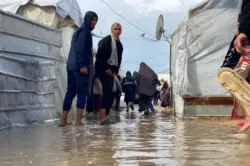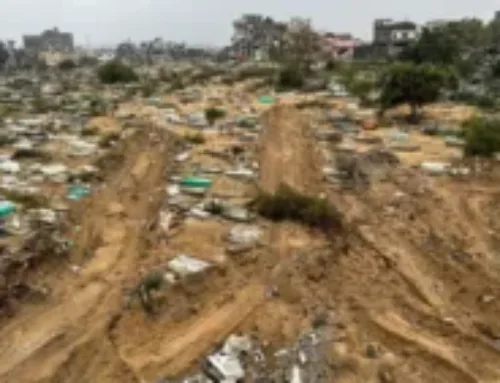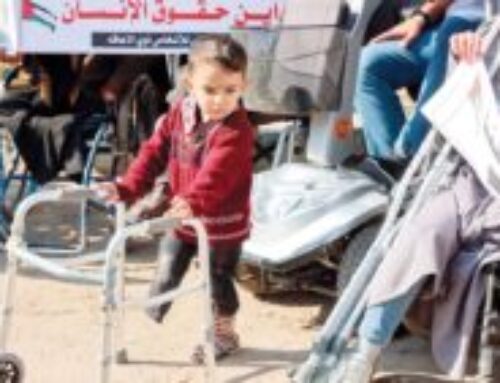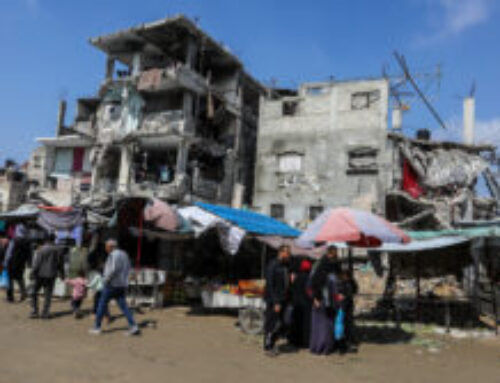When the sky pours down on soil soaked in rubble, fields do not bloom — tents drown. In Gaza, rain knocks on the doors of worn-out tents, creeps into shivering bodies under damp blankets and torn sheets, exposing the fragility of life under a war that never truly ended. Two years after a genocidal war left the Strip an open wound, winter descends like a second storm upon a people whose tears have yet to dry.
Destruction Seeps in with the Wind
Amid the paralysis of infrastructure and the ruin of homes, the UN Office for the Coordination of Humanitarian Affairs (OCHA) warns of an impending disaster. Over 200,000 families are sheltering in tents that offer no protection against the rain — lacking heating, winter clothing, or food supplies.
In a world paralyzed by inaction, only 37,000 tons of aid have entered Gaza out of 190,000 tons stockpiled outside, due to the usurping entity’s continued restrictions, even after the ceasefire announcement. Border crossings remain closed, and relief convoys are blocked from reaching northern Gaza, with no coordination permitted between humanitarian actors.
A Collapsing Health System, and Cold That Infects the Wounds
Nearly 16,500 patients await urgent evacuation for life-saving treatment. Hospitals are crumbling under severe shortages, medications have vanished, and winter only worsens the pain. The World Health Organization issued an urgent appeal to reopen the Rafah crossing — calling it a vital lifeline — but the plea is drowned out in a chorus of global silence.
Amani Al-Naaouq, spokesperson for the International Committee of the Red Cross, paints a harrowing picture: “The tents are flooded, and people are surviving on a threadbare resolve.” This is not a passing crisis — it is a daily deterioration, with fears mounting of deadly diseases spreading among a population exhausted by two years of siege and destruction.
Siege as Strategy, Destruction as Doctrine
Despite the ceasefire, the usurping entity continues to violate agreements: incursions, bombardments, and bans on the entry of tents, medicines, and prefabricated homes. Ismail Al-Thawabta, Director of the Government Media Office in Gaza, confirms that the occupation has deliberately worsened the crisis by blocking over 6,000 aid trucks at the Egyptian side of the Rafah crossing and denying the entry of mobile shelters promised in the truce.
Alarming figures indicate that 90% of civilian infrastructure has been destroyed, with preliminary losses exceeding $70 billion — and a new winter looms.
After the Rain…
Winter in Gaza is no ordinary season — it is a test of a world numbed to suffering. Beneath the rain, the Palestinian stands bare but dignified, confronting mud, illness, and slow death, as the world debates statements and trades moral gray zones.
In Gaza, people expect no miracles — only the bare minimum of justice: a roof to shield their children, medicine to ease their pain, and a hand that reaches not for the cameras but to dry the tears of the tents. There, beneath a sky that rains on open wounds, another chapter of resilience is written… its name: Gaza.





